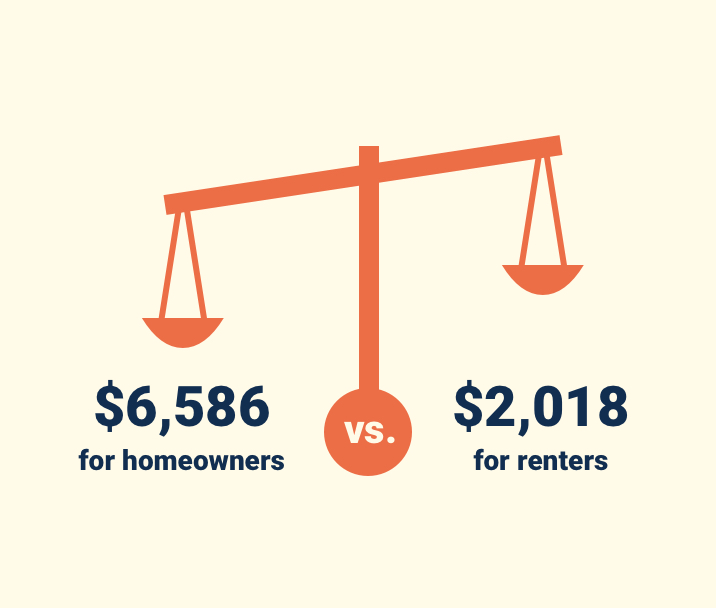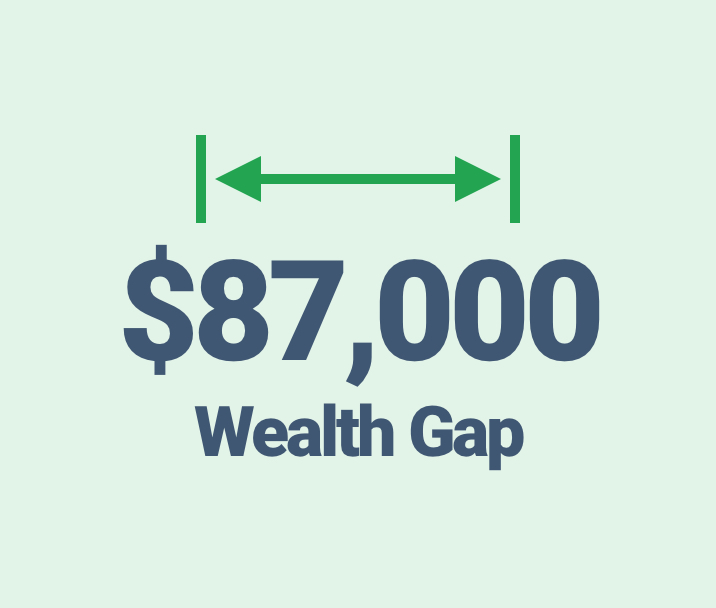Response to and Recovery from Disasters
Exploring how our region responds to and recovers from disasters
After disaster strikes, all levels of government, as well as the private sector, respond to provide assistance, though some in our region benefit more than others. The result is that some residents take much longer to recover, if they do at all.
Why an accessible response to disasters matters to Houston
The way in which we respond to disasters affects the total recovery time for a region and, in many cases, whether and how its most vulnerable residents recover, if at all. Many residents receive assistance from the government and have private and personal resources that enable them to make home repairs or rebuild and move on. Others are not so quick to recover, a consequence of experiencing disproportionate impacts combined with difficulty in accessing the resources necessary to rebuild their lives. The results lead to disparate recoveries both in terms of the recovery time and pathways, thereby worsening pre-existing disparities such as the wealth gap.
The more we understand the federal, local and private response and approach to disasters, the better we can identify gaps in assistance delivery for different communities and work to ensure a more equitable and timely response, so that everyone in our region not only recovers but is also made stronger.
The data
Federal response to natural disasters in the Houston area
FEMA’s Individual and Household Program
The Federal Emergency Management Administration (FEMA) addresses urgent basic needs through the Individual and Household Program (IHP), which provides financial assistance to those affected. Thousands apply, but more than half of the applications are denied. Applications that are approved receive varying amounts depending on the extent of damage and disruption, and if property is owned or rented.
FEMA IHP Assistance
Total approved amount from FEMA's Individual Household Program (IHP) ($)
The total amount in IHP assistance FEMA distributed after Hurricane Harvey in 2017 dwarfs that of other regional disasters in recent history. Residents of the three-county region received $918.2 million in FEMA disaster assistance as a result of damage from Hurricane Harvey.
FEMA’s IHP program provides assistance to homeowners to repair or rebuild their houses and funding for temporary housing. It also provides funds for owners of multifamily housing complexes, like apartments or condominiums, to fix units. Renters are only eligible for funds for uninsured or under-insured disaster-caused expenses and serious needs, such as repair of personal vehicles, funds for moving and storage, and other miscellaneous expenses approved by the government. Consequently, homeowners typically get more federal financial assistance than renters, who typically receive 64% of the IHP assistance dollars homeowners receive.
Average FEMA IHP Assistance
Average approved amount from FEMA's Individual Household Program (IHP) ($)
The average amount Houston homeowners in the three-county region received after Hurricane Harvey was $6,586, compared to $2,018 for renters. While FEMA paid out more for Hurricane Harvey overall than it did for other disasters, the highest average amount both renters and homeowners received in recent history was for the Memorial Day Flood in 2016. Across all disasters, Fort Bend County residents typically received more than residents of Montgomery and Harris counties.
Small Business Administration
In contrast to the direct aid of FEMA disaster assistance, the U.S. Small Business Administration (SBA) provides low-interest, long-term loans to homeowners, renters and business owners of all sizes, including nonprofit organizations, that experienced damage from a declared disaster. These loans can be used to cover operating expenses for small businesses as well as repairs and replacement of physical assets that were not previously covered through other means like insurance.
SBA Home Loans
Value of approved home loans from the Small Business Administration (SBA) ($)
After Hurricane Harvey, the SBA issued $1.5 billion in home loans to residents in the three-county region, which is 50% more than the entire amount FEMA provided ($918.2 million). The three-county region received an additional $116.9 million in home loans for the four flood events in 2015 and 2016 combined.
Supplemental Nutrition Assistance Program
The U.S. Department of Agriculture’s Supplemental Nutrition Assistance Program (SNAP), known previously as “food stamps,” helps eligible low-income households buy food and groceries. For up to three months immediately after a declared disaster, SNAP eligibility requirements are expanded to benefit more people.
SNAP Recipients
Number of individuals receiving Supplemental Nutrition Assistance Program (SNAP) benefits.
The greatest uptick in SNAP recipients occurred after Hurricane Harvey. The number of people using SNAP in Greater Houston increased by 50% — from 767,000 in August 2017 to 1,153,000 the following month. SNAP usage increased 53% in Harris County, 44% in Fort Bend County, and 6% in Montgomery County during the same time period.
National Flood Insurance Program
Possession of flood insurance alone does not necessarily translate to a quick recovery,1 but it acts as a safety net. FEMA manages the National Flood Insurance Program (NFIP) that is designed to compensate for damage from natural disasters. NFIP is the nation’s largest flood insurance program with more than 5 million policyholders nationwide. Properties located in the 100-year flood zone with mortgages from government-backed lenders are required to have flood insurance.
While properties outside FEMA’s designated 100-year flood zone are not required to get flood insurance, it is recommended, though most people are not aware of the dangers of flooding in their neighborhoods, partly because of outdated flood maps and the absence of state laws requiring landlords to disclose flooding history to renters. That’s one reason why about 80% of flood victims after Harvey did not have flood insurance. Affordability also plays a major role in whether one secures insurance — low-income households, even those who live in the 100-year flood zone are less likely to carry flood insurance. In a nationwide analysis, FEMA found that even though 41% of households are low-income, they comprise 51% of households inside the 100-year flood zone without an NFIP policy.2
NFIP Policies
The number of flood insurance policies through the National Flood Insurance Program (NFIP) as of July 31, 2020
More than half of NFIP policies in Texas are issued in the Greater Houston area. There are nearly half a million active insurance policies for both residential and non-residential properties in the three-county region, the vast majority of which are in Harris County. About 15-16% of Harris County residents carry flood insurance through NFIP. In high-risk areas, that climbs to 28%.3
Local response to natural disasters in the Houston area
Local government plays a large role at the beginning of the disaster recovery process. In the immediate aftermath of a disaster, local governments establish shelters, provide basic necessities, coordinate and conduct rescues, and clean up and remove debris.
Local municipalities and districts also play a large role in mitigating the effects prior to the occurrence of disasters through investments in infrastructure and the adoption and enforcement of flood plain management policies. However, a majority of residents don’t believe the local government is successful in protecting their homes from flooding.
Perception of Local Government
How would you rate local government’s efforts to protect Houston homes from flooding?
Six months after the flooding in Houston caused by Hurricane Harvey, about 40% of people in the region rated efforts by the local government to protect homes from flooding as “poor,” according to the Kinder Institute’s 2018 Houston Area Survey. Residents in Harris County have slightly more confidence in local governments than those in Fort Bend or Montgomery counties. Additionally, nearly half of both Black (49%) and white (45%) residents in the three-county region rated local government efforts as “poor.”
Buyouts
One method local governments use to mitigate the impact of future disasters is through property buyouts. The buyout program uses federal and local dollars to purchase properties in qualifying areas that have been flooded or affected by other natural disasters multiple times. Then, the land is used as parks, green space, or flood storage or overflow. Eligible properties include single-family homes, commercial buildings, places of worship and multi-family residences, but residential properties are the highest priority. This benefit is available to property owners only. If multi-family properties are bought out, the funds go to the owners, and tenants are required to leave. The average buyout takes longer than five years4 and only one in five typically qualifies.5
Harris County has used the buyout program more than any county in the nation. Harris County Flood Control District has spent roughly $342 million to purchase about 3,100 homes since 1985, according to a 2017 ProPublica report. There are still approximately 3,300 homes on the District’s priority-buyout list, which represents about 20% of homeowners who have volunteered.
Buyouts
Number of buyouts between 1995 and 2016
Between 1995 and 2016, 2,400 properties were bought out, according to FEMA data reported by NPR, among which nearly 90% occurred in Harris County (2,092). An additional 290 buyouts took place in Montgomery County and 18 in Fort Bend. More recent data from Harris County Flood Control District shows an additional 576 properties have been purchased and 695 buyouts are in process since 2017.
Buyouts are concentrated in areas that experience multiple floods to maximize the effectiveness of the strategy. Buyouts in Harris County have concentrated in Jersey Village (430 buyouts between 1995 and 2016), East Aldine (132), Acres Homes (130), Greenspoint (121), George Bush Intercontinental Airport (119), and Kingwood (114). Buyouts in Montgomery County have been concentrated in Conroe (158). Fort Bend used the buyout program in 2016 to convert eight properties in Simonton to vacant land.
Private philanthropic response to natural disasters in the Houston area
The public sector plays the largest role in natural disaster recovery and response, though it can take time for public dollars to trickle down to individuals. Private philanthropic dollars often support an immediate response — including filling gaps in assistance for the most vulnerable — but philanthropy can also invest in innovative models of program and service delivery.
Disaster Philanthropy Investments
Between 2011 and 2019, about $202.6 million philanthropic dollars have been invested in Houston’s three-county region — the vast majority went to organizations based in Harris County, according to data from Measuring the State of Disaster Philanthropy. Over the past decade, disaster philanthropy in the region peaked in 2017 and 2018, with foundations, business and individuals investing $75.8 and $82.3 million in the region, respectively.
Nonprofits in Houston that have been top recipients of disaster philanthropy between 2011 and 2019 include Attack Poverty, Fort Bend Family Health Center, and Focus Humanitarian Assistance USA in Fort Bend County; United Way of Greater Houston, BakerRipley, and Greater Houston Community Foundation in Harris County; and Connect Outreach, Missions on Wheels, and Habitat for Humanity in Montgomery County, according to data from Candid.
An analysis by the Houston Chronicle found that nearly $1 billion was donated after Hurricane Harvey — the most on record after a disaster. That includes $522.7 million by the Red Cross; $114 million by the Greater Houston Community Foundation; $100 million by the Rebuild Texas Fund; $87.5 million by the evangelical group Samaritan’s Purse; $61.4 million by United Way; $41.6 million by JJ Watt’s campaign; $30 million by the Salvation Army; and $14 million by the Center for Disaster Philanthropy. A Charity Navigator report found 5.4 million people donated $742.6 million specifically for Hurricane Harvey relief.
Slow and uneven natural disaster recovery in the Houston area
Some residents in our region are not only hit harder by natural disasters in Houston, but also receive less assistance to recover. Research indicates that federal disaster assistance policies tend to place vulnerable groups at a disadvantage and reduce their ability to access resources and assistance for natural disaster recovery.6 As a result, the many impacts of disasters can last more than several years for those with the fewest resources needed to recover. Disasters can also widen the wealth gap. Joint research between Rice University and the University of Pittsburgh found that whites accumulated more wealth after natural disasters between 1999 and 2013 while residents of color accumulated less, even after controlling for a variety of demographic and household factors.7 In Harris County, the disaster-related increase in the Black-white wealth gap averaged $87,000.
Slow and Uneven Recovery
Percent of residents negatively affected by Hurricane Harvey
Has Houston recovered from Harvey?
Data from the Episcopal Health Foundation’s Harvey survey found that Black, low-income and immigrant families were most likely to report they were not getting the help they needed to recover after Hurricane Harvey, and the financial assistance they did receive (if any) covered “very little” or “none” of their financial losses.
About 41% of Black residents who were affected by Hurricane Harvey reported that their lives were still “somewhat” or “very” disrupted one year later, compared to 26% of white residents. Nearly one in five (17%) Harris County residents reported their overall quality of life one year after the storm is worse as a direct result of Hurricane Harvey, with Black (31%) and low-income households (20%) reporting higher levels of disruption than the region overall.
Learn about social vulnerability and the Social Vulnerability Index
Helpful Articles by Understanding Houston:
- Houston is Resilient
- Houston is Generous
- Houstonians’ Experiences with Hurricane Harvey and the COVID-19 Pandemic
- After Six Federal Disasters in Five Years, Why Do We Not Fully Prepare?
- Houston is Big
References:
- U.S. Government Accountability Office. (2017, April). Flood insurance: Comprehensive reform could improve solvency and enhance resilience. https://www.preventionweb.net/go/52896
- U.S. Department of Homeland Security, Federal Emergency Management Administration. (2018, April). An Affordability Framework for the National Flood Insurance Program. https://www.fema.gov/sites/default/files/2020-05/Affordability_april_2018.pdf
- Insurance Information Institute. (2020, June). Fact file: Texas hurricane insurance.
- NRDC. (2019, September). Going Under: Long Wait Times for Post-Flood Buyouts Leave Homeowners Underwater. https://www.nrdc.org/sites/default/files/going-under-post-flood-buyouts-report.pdf
- ProPublica and The Texas Tribune. (2017, November). Buyouts Won’t Be the Answer for Many Frequent Flooding Victims. https://features.propublica.org/houston-buyouts/hurricane-harvey-home-buyouts-harris-county/
- Urban Institute. (2020, September). Federal Disaster Policy Reforms — Including Flood Insurance Treatment—Should Center Racial and Economic Equity. https://www.urban.org/urban-wire/federal-disaster-policy-reforms-including-flood-insurance-treatment-should-center-racial-and-economic-equity/
- Howell, J. & Elliott, J.R. (2019). Damages Done: The Longitudinal Impacts of Natural Hazards on Wealth Inequality in the United States. Social Problems, 66(Issue 3), 448-467. https://doi.org/10.1093/socpro/spy016



